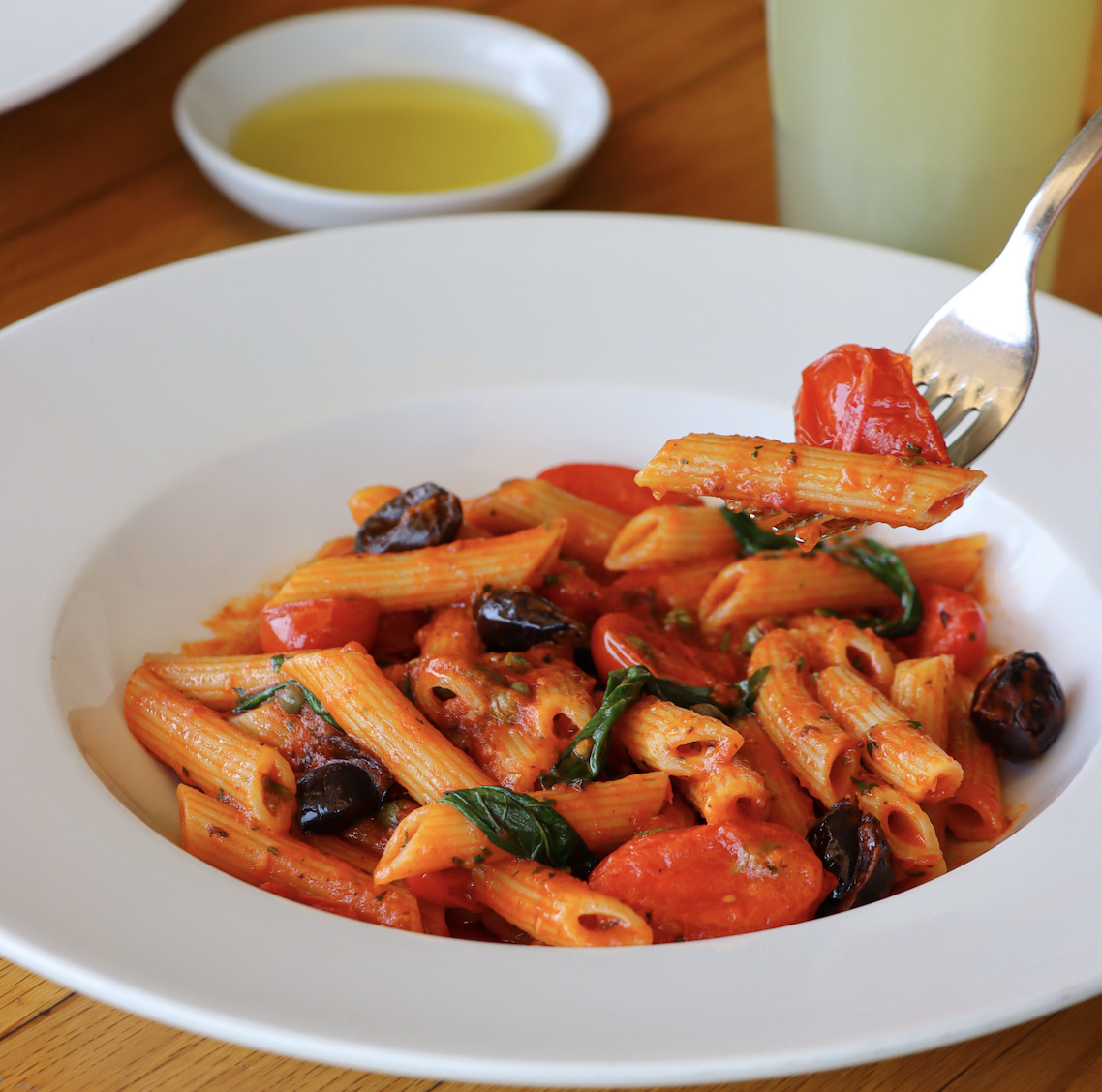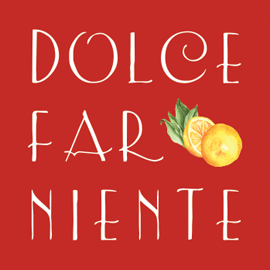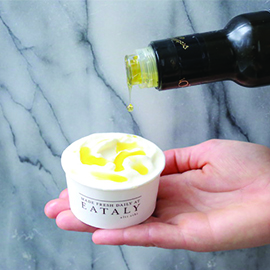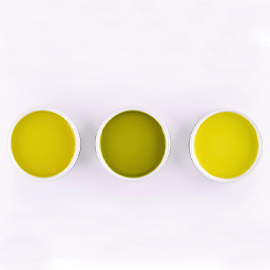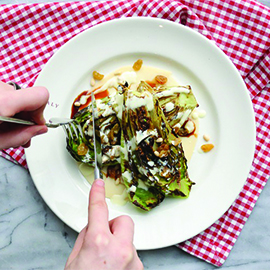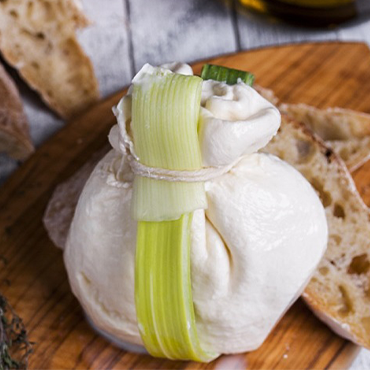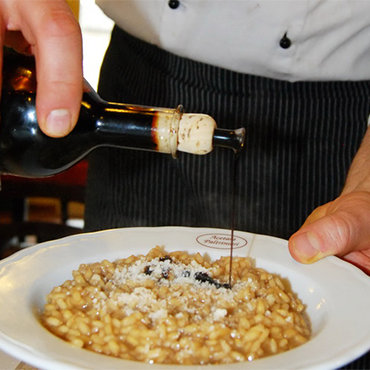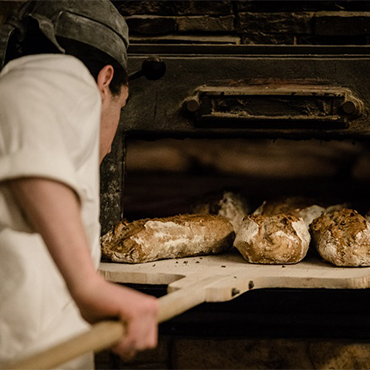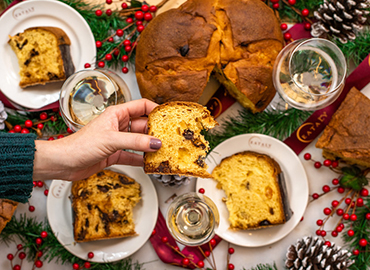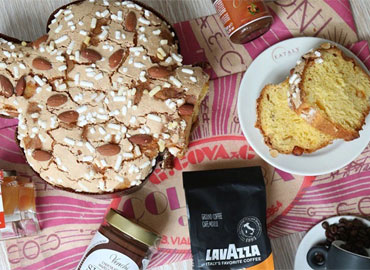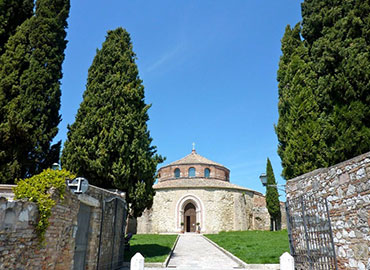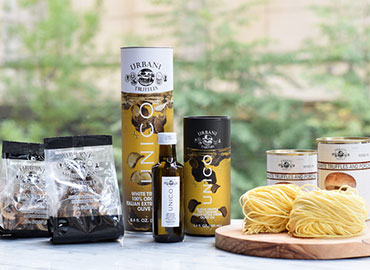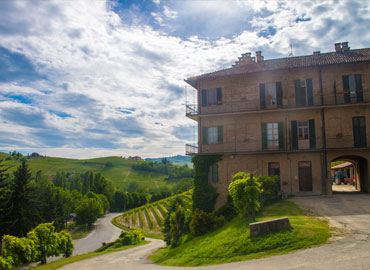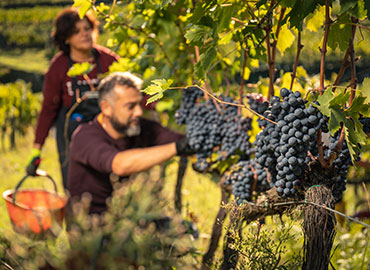So: you know you love Grana Padano, enough that when a chef asks you, "Would you like freshly grated Grana Padano over your dish?", the answer is always yes. But now, you're ready for the next step in the quest to know this sweet, nutty cheese: the back story.
Get a taste of the centuries of tradition and years of work that are ingrained each wedge of Grana Padano DOP. Trust us: the next time you get a heavenly sprinkling on your dish, the experience will be even richer.
LONG, LONG AGO...
Grana Padano dates back to the Middle Ages, when cucina povera, the no-waste "poor cooking" style, was the peasant's guide to survival. To stretch out ingredients between the seasons, food was preserved in ingenious ways, from sun-drying to salting.
When Cistercian monks built the Chiaravalle Abbey in a marshy area in the heart of the Po River Valley in 1135 A.D., they relied on this method to feed themselves. Without any riches of their own, they started growing crops and raising livestock. Soon, they successfully produced enough food to feed themselves and the nearby community — and produced a surplus of milk. Therefore, they had to find a way to save this nutrient-rich product and created the recipe to produce a cheese that could keep.
The monks finalized the perfect process to transform their fresh milk: slowly cook, add rennet, leave the wheels in a salty brine, then store away in the cool cellars of the monastery. Dense and grainy, the resulting cheese marks the start of grana ("grain"), the first name for Grana Padano, a cheese that withstands the test of time.
GRANA PADANO TAKES OFF
Over the next few centuries, everyone — dukes and farmers, peasants and princes — everyone fell in love with Grana Padano. The cheese's rich, nutritional properties, long shelf-life, and deep flavors surpassed class lines.
Alas, in recent centuries, copycat cheeses have popped up across the market. Can you imagine dropping dollars for Grana Padano, only to realize that it was more sawdust than cheese? The horror. (We're not being dramatic: that actually happened.)
In 1954, to separate the genuine Grana Padano from the fake stuff, the Grana Padano Protection Consortium was established to bring together all the producers, affineurs (experts who age cheese), and traders of this formaggio. Finally, in 1996, the European Union granted the cheese DOP, or denominazione d'origine protetta (Protected Designation of Origin), status (get a quick refresh on your European certifications).
What does this mean?
Every time you pick up a wedge of Grana Padano DOP, you know you are in for the real deal.

THE DIFFERENCE OF GRANA PADANO DOP
Inspired by the monks' centuries-old "recipe," each and every wheel of Grana Padano DOP is made using a unique procedure, which is repeated every time in exactly the same way, only in the Po River Valley (regions include Piemonte, Lombardia, Veneto, and some provinces in Trentino-Alto Adige and Emilia-Romagna).
The cheesemakers start with fresh milk. Specifically, unpasteurized (read: raw!) semi-skimmed milk from cows raised on a controlled diet of both fresh or stored forage and greens, which only can be sourced in the legally designated geographical area.
The milk is placed inside the traditional copper cooking cauldrons, which are shaped like an upside-down bell. At this point, the cheese undergoes an intricate process that takes days (curious? check it out!).
The cheese wheels are then taken to a maturing warehouse, where they are left to age at controlled temperatures for at least 9 months to over 2 years. On the ninth month of aging, all Grana Padano wheels are examined with the traditional inspection tools: a hammer, a needle, and a probe. If the wheels pass all the tests, they will be fire-branded, which guarantees the quality required for Grana Padano DOP.
As it ages, Grana Padano develops a firm, thick, and deeply straw-colored rind that protects the fragrant, unmistakable taste and flavor of the cheese. Curious? Watch the entire process!

GOT IT. BUT HOW DOES IT TASTE?
Crumbly and crystalline, Grana Padano DOP is sweet and nutty with aromas of butter and hay.
But it doesn't stop there. The cheese evolves as it ages. A nine-month old wedge is a different experience from the two-year-old. The older the cheese, the more pronounced the flavors. Grana Padano DOP becomes more savory and complex, boasting a more crystalline texture.
Is your mouth watering yet?
BACK TO THE TABLE
Your quest to know the real Grana Padano is coming full circle: let's go back to the table.
If you're new to Grana Padano — or even if you're not! — enjoy the cheese on its own every now and then. Have some food-curious friends over, and taste the difference in the ages. Or, place it front and center on a cheese platter, perhaps paired with earthy and intense Italian prosciutto, fruit, and honey.
And let's be real: this cheese is always a star when freshly grated or thinly shaved over almost any dish (yes, even dessert!).
Finally, when you're done with your wedge, don't toss the rind. What would the cucina povera folks have to say about that? Instead, throw it into your next farro, soup, or risotto. As your dish cooks, the rind melts and adds an extra level of flavor and texture.
Enjoy the next step in your Grana Padano DOP quest — buon appetito!

Take home this sweet and nutty cheese! Find your local Eataly to learn more.



